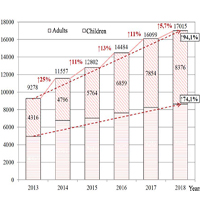 Smart Citations
Smart CitationsSee how this article has been cited at scite.ai
scite shows how a scientific paper has been cited by providing the context of the citation, a classification describing whether it supports, mentions, or contrasts the cited claim, and a label indicating in which section the citation was made.
Evaluation of orphan diseases global burden
Orphan diseases is a significant socio-economic burden for both global and Russian health care systems. The global burden of disease metrics introduced by WHO, such as DALY, QALY, HALE, can be a useful tool for building economic models and prognoses, as well as medicine funding distribution. However, it is very difficult to standardize a heterogeneous group of rare diseases and it is difficult to talk about the cost-effective treatment options search, in cases where patients with an orphan disease may have only one pathogenetic therapy option. Much work needs to be done to find optimal treatment options and establish the standards of care necessary to maintain physical health, work capacity and quality of life.
Downloads
How to Cite
PAGEPress has chosen to apply the Creative Commons Attribution NonCommercial 4.0 International License (CC BY-NC 4.0) to all manuscripts to be published.

 https://doi.org/10.4081/ejtm.2021.9610
https://doi.org/10.4081/ejtm.2021.9610





